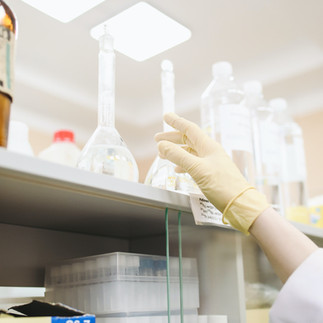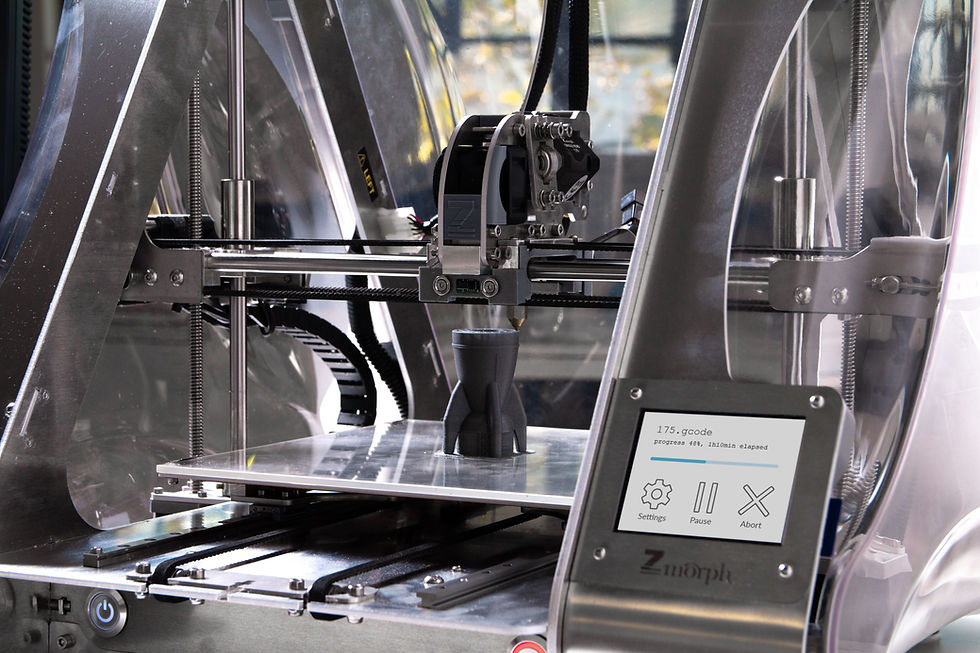What is a Fumigation Certificate in Exports & Shipping?
- customerservice141
- Apr 11, 2023
- 5 min read
Updated: Apr 24, 2023
A fumigation certificate serves as proof that the wooden products in a specific shipment have undergone chemical disinfection. This article provides comprehensive information on the significance of fumigation certificates in exports, covering everything you may want to know.

Diving into the complex world of fumigation, it is essential to recognize the importance of fumigation certificates within the context of freight shipping and customs brokerage. For wooden products exported, obtaining a fumigation certificate is not only a regulatory requirement but also a crucial measure to ensure pest-free cargo. This procedure entails the use of specialized chemicals by trained fumigation professionals to eradicate harmful organisms, employing a range of fumigants tailored to specific needs. The cost associated with acquiring a fumigation certificate varies based on factors such as the chosen fumigants and the surface area requiring treatment.
Choosing a comprehensive container load fumigation service can prove more cost-effective than paying on a per-pallet basis. Furthermore, considering alternative packaging materials like cardboard and particleboard can enable exporters to bypass the fumigation process altogether.
PURPOSE OF A FUMIGATION CERTIFICATE?
When shipping air cargo or using freight companies, it's important to protect your wooden items from pests. A fumigation certificate ensures that all wooden products, including furniture, raw materials, packaging boxes, and pallets, are chemically treated to eliminate pests. Using fumigation certificates in your logistics and freight shipping is crucial for safe and secure delivery.
WHY IS A FUMIGATION CERTIFICATE REQUIRED?
When exporting goods, they may be enclosed in containers for extended periods, which exposes them to temperature and humidity changes, making wooden items particularly susceptible to pest infestation. As a measure to protect the environment and the forest cover of the importing country, numerous nations mandate fumigation as part of the customs clearance process.
A fumigation certificate serves as confirmation that your cargo has been treated with appropriate fumigants, ensuring that it's free of pests. Obtaining a fumigation certificate is typically compulsory, and it's always beneficial when exporting internationally since many importers demand it to ensure their cargo is pest-free. To comply with regulations and safeguard your goods, it's advisable to obtain a fumigation certificate from a reputable freight company with specialized expertise in logistics and freight shipping.
The International Standards for Phytosanitary Measures (ISPM 15) were implemented in 2002 with the aim of standardizing phytosanitary measures for wooden packaging. Prior to this, global trade was hindered by a complicated set of regulations enforced by various authorities. The ISPM 15 regulations establish a uniform standard for all exporters to prevent the spread of pests by treating all wooden packaging.
WHEN IS A FUMIGATION CERTIFICATE REQUIRED?
When exporting wooden products, it is crucial to ensure compliance and protect goods from pests by fumigating them. A fumigation certificate is mandatory for such products, as well as for wooden packaging materials such as pallets or stands. To avoid the risk of pest infestation and the need for fumigating various container types, many exporters are transitioning to plastic packing materials.
It's important to note that only wooden products require fumigation, not cardboard, particleboard, and other wooden derivative products. Exporters can use these materials as packaging alternatives to avoid the fumigation process and reduce associated costs. By doing so, exporters can streamline their logistics and freight shipping processes while maintaining compliance with regulations.
HOW TO GET A FUMIGATION CERTIFICATE
Each country has its own guidelines and legislation for issuing licenses to fumigation agencies. Once an agency receives its license, it can begin accepting fumigation contracts from exporters. After the cargo has been fumigated, these government-accredited agencies also provide a fumigation certificate. This official document serves as a guarantee that the cargo has been treated with appropriate fumigants and is free of pests, ensuring compliance with regulations and protecting the cargo from potential damage.
HOW DOES FUMIGATION WORK?
Fumigation is a vital process that eliminates termites, pests, and other harmful organisms by either suffocating or poisoning them. Fumigation experts use various chemicals, also known as fumigants, to spray the affected areas. Methyl Bromide is the most commonly used fumigant, but many agencies also employ other chemicals such as Chloropicrin, Phosphate, Dichloropropene, Methyl Isocyanate, Hydrogen Cyanide, Sulfuryl Fluoride, and Formaldehyde.
Once the container is sealed, fumigators use specially designed equipment to inject the fumigants into the container. The closed doors ensure that the gas covers the entire container and prevents it from escaping. However, it's worth noting that this process is prohibited when transporting various food and edible products for direct consumption.
DETAILS REQUIRED FOR THE FUMIGATION CERTIFICATE
A fumigation certificate must include specific details such as the purpose of the treatment, the list of fumigants used, the duration of the treatment, and the temperature range during fumigation.
In accordance with the ISPM 15 regulations, four distinct methods are recognized for addressing the potential issues caused by insects and contaminants present in wooden shipping materials.
1. Heat Treatment
The Heat Treatment (HT) method entails exposing wood to a minimum temperature of 56 degrees Celsius for a duration of no less than 30 minutes to guarantee that its core is completely heated. This is achieved by inserting the timber packaging or wood into a specialized kiln or industrial microwave, which renders it unsuitable for insect habitation. Pallets that have undergone HT treatment are marked with an HT stamp for easy identification.
2. Kiln Drying
Kiln drying is a process similar to HT, but it involves reducing the moisture content of the wood in addition to ensuring pest extermination. The pallets are placed in large heating chambers or kilns and gradually heated, causing any excess moisture to evaporate. Since Kiln Drying aims to reduce moisture rather than eliminate pests, it is essential to comply with and document the appropriate IPSM 15 moisture standards. Treated kiln-dried wood is also stamped with an HT mark.
3. Methyl Bromide
Methyl Bromide (MB) is the lengthiest method recognized by IPSM 15 for wood treatment. MB, also known as bromomethane, is a colorless and odorless gas that has traditionally been used as a pesticide and fumigant in agriculture. While it is gradually being phased out due to its toxicity, it is still an acceptable treatment method for wood in a controlled environment.
Container fumigation is the typical method used to apply MB, in which the entire container carrying the wood is filled with MB and kept in quarantine for 24 hours before being aerated and released. Another IPSM 15-approved method involves isolating the wooden cargo and covering it with a specialized tent that is made airtight with weights. Then MB is pumped into the tent, and the cargo is left for the required 24 hours before being aerated and released.
An MB stamp is marked on wooden pallets treated with methyl bromide.
4. Dielectric Heat Treatment
Dielectric Heat Treatment is a technique that utilizes high-frequency alternating electric fields, radio waves, or microwave electromagnetic radiation to heat the entire wood profile to a minimum of 60 degrees Celsius within the first 30 minutes of the process. Manufacturers of such pallets must seek approval from the NPPO. Industry insiders suggest that this treatment process will gain more popularity due to its operational benefits and speed.
COST OF GETTING A FUMIGATION CERTIFICATE
The expense of fumigating your cargo is influenced by various factors, such as the type of fumigants employed and the surface area that necessitates disinfection. For full container load (FCL) shipments, it is more economical to hire a fumigation service for the entire container instead of paying per pallet. On the other hand, paying per pallet is advisable for less than container load (LCL) shipments.
CONCLUSION
To summarize, a fumigation certificate is mandatory for exported wooden products to ensure compliance with regulations and that the cargo is free of pests. Obtaining a fumigation certificate is essential for the
safe and secure delivery of goods. Fumigation involves using chemicals to eliminate harmful organisms, and fumigation experts use various fumigants for this process. The cost of obtaining a fumigation certificate depends on factors such as the type of fumigants used and the surface area requiring disinfection. It is more cost-effective to hire a fumigation service for a full container load rather than paying per pallet. Lastly, exporters can avoid fumigation of wooden packaging materials by using alternative materials like cardboard and particleboard.









